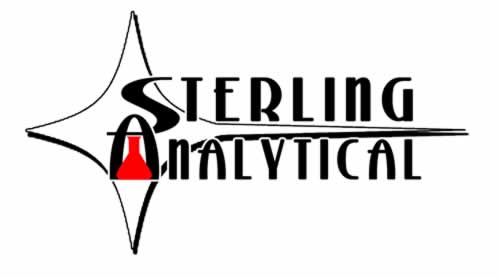FAQ
Frequently Asked Questions
Which Total Organic Halogen method should I use?
If the personal are not trained or confident in performing the analysis and are able to wait a day or less for results, another option is available.
The Rapid turn-around-time (TAT) Total Halogens Test: (ASTM 9076)
Used oil transporters, generators and facilities that recycle or re-refine used oil can expedite TOX analysis with precision utilizing the most current ASTM methods. We offer certified same day testing of waste oils, contaminated soils, waters and hazardous wastes. Disposable mercury kits are hazardous to use and dispose of and are less accurate than the micro-coulometric method that measures halogenated compounds from 10ppm to percent level. Reliable measurement is critical for proper management and disposal of waste materials. This test method also covers the determination of total chlorine in new and used oils, fuels and related materials, including crankcase, hydraulic,diesel, lubricating and fuel oils, and kerosene by oxidative combustion and microcoulometry. The chlorine content of petroleum products is often required prior to their use as a fuel.
What are the precautions when using Field Test Kit Methods for Halogens? (ASTM 9077)
NOTE: Warning–When crushing the glass ampoules, press firmly in the center of the ampoule once. Never attempt to recrush broken glass because the glass may come through the plastic and cut fingers.
NOTE: Warning–In case of accidental breakage onto skin or clothing, wash with large amounts of water. All the ampoules are poisonous and should not be taken internally.
NOTE: Warning–The gray ampoules contain metallic sodium. Metallic sodium is a flammable water-reactive solid.
NOTE: Warning–Do not ship kits on passenger aircraft. Dispose of used kits properly.
NOTE: Caution–When the sodium ampoule in either kit is crushed, oils that contain more than 25% water will cause the sample to turn clear to light gray. Under these circumstances, the results may be biased excessively low and should be disregarded.
What interferences exist when using Field Test Kit Methods for Halogens? (ASTM 9077)
What is the approved method for measuring Ultra low Sulfur diesel Fuel?
Is all diesel fuel Ultra Low Sulfur Diesel? (ULSD)
What is the Sulfur content of low sulfur diesel Fuel? (LSD)
Low sulfur diesel (LSD) was replaced with ultra-low sulfur diesel (ULSD) in 2006 as part of an initiative to substantially lower the emissions of particulate matter in diesel engines. The initiative began in the European Union and later expanded to the United States.
When will Northeastern States require ultra-low sulfur heating oil (ULSHO)?
Massachusetts, New Jersey and Vermont followed suit with a less-stringent 500 ppm standard in 2014, but are all going to require ULSHO by 2018.
What are the structural elements of wood and how are they measured?
A Carbon Hydrogen and Nitrogen Analyzer can be used for CHN analysis or combustion analysis to determine the carbon, hydrogen and nitrogen content in coal, coke, petroleum, biomass products and other combustibles.
Sterling Analytical uses state-of-the-art LECO Instruments to provide superior accuracy and reliability. LECO Combustion Analysis successfully detects low levels of carbon, sulfur, nitrogen, oxygen and hydrogen (from 0.1 to 100 percent, depending upon the sample type).
Performed in accordance with ASTM D5373, LECO Combustion Analysis methods include: Carbon, Hydrogen, Nitrogen, and Oxygen analysis. SULFUR analysis is performed in accordance with ASTM D1552 (OIL) and ASTM D4239 (SOLID).
Applications for combustion analysis involve only the elements of carbon (C), hydrogen (H), nitrogen (N), and sulfur (S) as combustion of materials containing them convert these elements to their oxidized form (CO2, H2O, NO or NO2, and SO2) under high temperature high oxygen conditions. Notable interests for these elements also involve measuring total nitrogen in food or feed to determine protein percentage, measuring sulfur (ASTM D4239) in petroleum products and wood products.
Why is chlorine tested in various solid fuels?
Super-heater steam pipes are generally not designed to accommodate the chlorine in biomass fuels, therefore the concentration of chlorine in wood products impacts power plant outage frequency.
What is the recommended method for Chlorine testing?
What are the environmental concerns associated with biomass combustion?
Biomass combustion has variable emissions, depending on the types and quality of fuel used, combustion technologies and operating conditions. The quality of the fuel depends mainly on its chemical composition, including water and ash contents, plant species, where it grows (origin), fertilizers and pesticides used, harvesting practices, transport, handling and processing, and blending of plant species type.
The combustion and pyrolysis of wood pellets in stoves produce atmospheric emissions of particulate matter (PM), carbon monoxide (CO), nitrogen oxides (NOx), volatile organic compounds, (VOCs), mineral residues, and to a lesser extent sulfur oxides (SOx).
Biomass with high chlorine content can lead to hydrogen chloride formation during combustion, which can have negative effects on the human respiratory systems and can cause acid rain formation.
Why is mercury a concern in biomass combustion?
All biomass fuels have the potential for mercury values above the EPA’s proposed major source MACT limits indicating emissions monitoring or installation of a control technology may be required if new EPA regulations are enacted. Mercury (Hg) emissions from biomass burning (BB) are an important source of atmospheric Hg and a major factor driving the interannual variation of Hg concentrations in the troposphere.
What methods of mercury analysis does Sterling Analytical employ?
EPA Method 245.1: Determination of Mercury in Water by Cold Vapor Atomic Absorption Spectrometry
